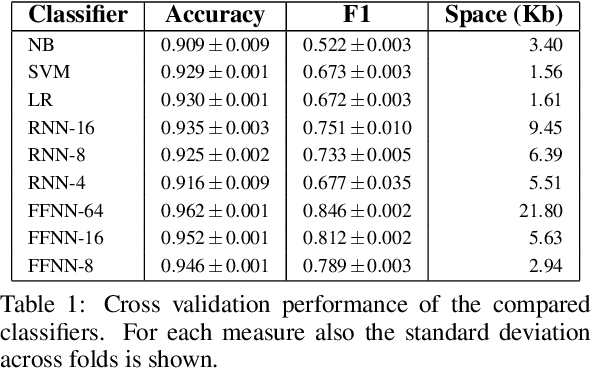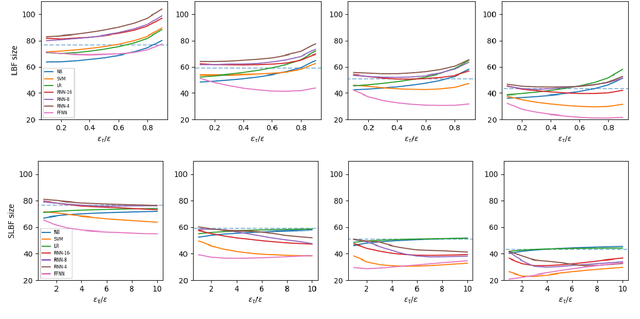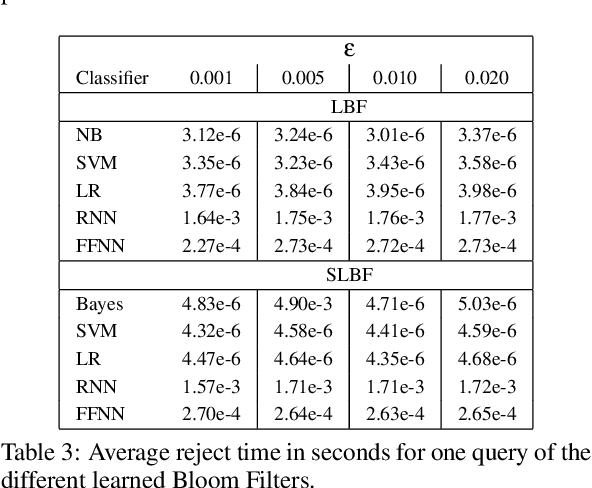Giacomo Fumagalli
A Critical Analysis of Classifier Selection in Learned Bloom Filters
Nov 28, 2022Abstract:Learned Bloom Filters, i.e., models induced from data via machine learning techniques and solving the approximate set membership problem, have recently been introduced with the aim of enhancing the performance of standard Bloom Filters, with special focus on space occupancy. Unlike in the classical case, the "complexity" of the data used to build the filter might heavily impact on its performance. Therefore, here we propose the first in-depth analysis, to the best of our knowledge, for the performance assessment of a given Learned Bloom Filter, in conjunction with a given classifier, on a dataset of a given classification complexity. Indeed, we propose a novel methodology, supported by software, for designing, analyzing and implementing Learned Bloom Filters in function of specific constraints on their multi-criteria nature (that is, constraints involving space efficiency, false positive rate, and reject time). Our experiments show that the proposed methodology and the supporting software are valid and useful: we find out that only two classifiers have desirable properties in relation to problems with different data complexity, and, interestingly, none of them has been considered so far in the literature. We also experimentally show that the Sandwiched variant of Learned Bloom filters is the most robust to data complexity and classifier performance variability, as well as those usually having smaller reject times. The software can be readily used to test new Learned Bloom Filter proposals, which can be compared with the best ones identified here.
On the Choice of General Purpose Classifiers in Learned Bloom Filters: An Initial Analysis Within Basic Filters
Dec 13, 2021



Abstract:Bloom Filters are a fundamental and pervasive data structure. Within the growing area of Learned Data Structures, several Learned versions of Bloom Filters have been considered, yielding advantages over classic Filters. Each of them uses a classifier, which is the Learned part of the data structure. Although it has a central role in those new filters, and its space footprint as well as classification time may affect the performance of the Learned Filter, no systematic study of which specific classifier to use in which circumstances is available. We report progress in this area here, providing also initial guidelines on which classifier to choose among five classic classification paradigms.
 Add to Chrome
Add to Chrome Add to Firefox
Add to Firefox Add to Edge
Add to Edge